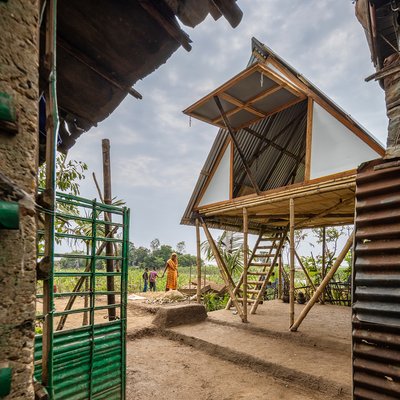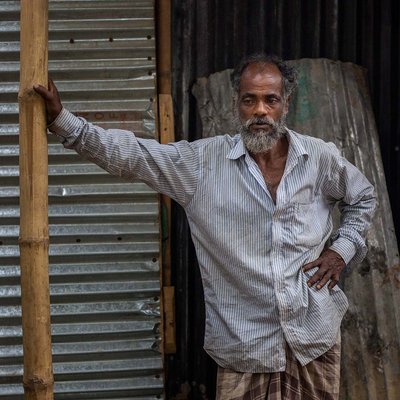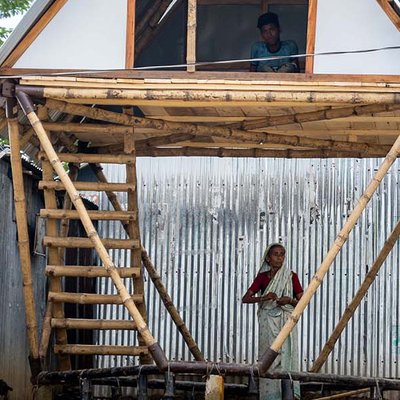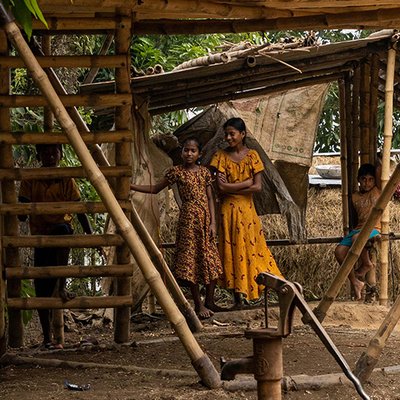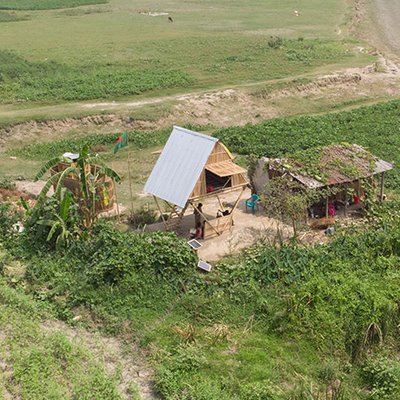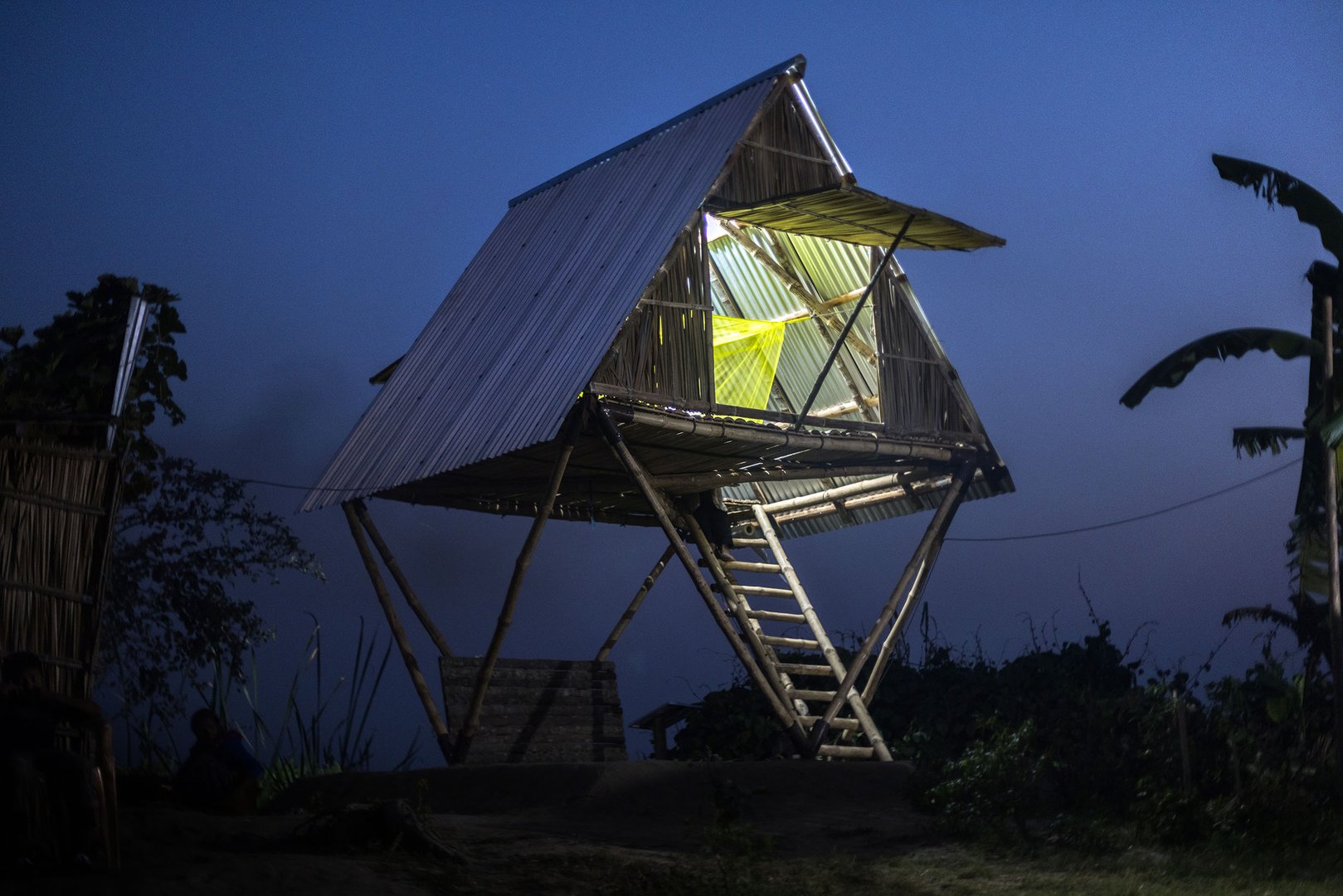
Discover the famous architect constructing flat-pack houses for flood victims.
The Khudi Bari appears little in comparison to the vast plains of Bangladesh's river deltas.
The two-story building has a platform that is supported by weak legs and a pitched roof that mimics a free-standing treehouse. Its name translates to "tiny house" in Bengali, and the slender bamboo frame of the structure appears feeble in comparison to the sweeping golden fields and the waves dashing against the river bank.
Although the little home appears fragile, the landscape actually is. Every few years, the map changes along these river deltas due to riverbank erosion, which causes islands known as chars to rise and fall with the seasons.
Many individuals lose their land. Many communities have disappeared beneath the ocean, according to Marina Tabassum. They constantly had to relocate due to floods, therefore Marina Tabassum Architects' (MTA) multi-award-winning founder sought to find a solution for them.
The instant the sand bed begins to disappear, they must move, Tabassum stated. They were supposed to be able to move with their structure, according to the theory.
The Khudi Bari provides a stable presence in a nomadic existence since it is portable and lightweight while yet being able to endure strong winds and rain.
Bangladesh, one of the most climate change vulnerable nations in the world, endures heavy monsoons and flooding for many months each year.
"The coastal areas of Bangladesh, where we are facing the sea level rise and the changing biodiversity and ecology, those areas need a lot of attention," Tabassum added.
She and her team started looking into the requirements of these communities in 2018, but they didn't have time to properly explore the notion of what this interim structure may include until the epidemic struck and many other initiatives came to a standstill.
After considering a number of options, the team settled on bamboo as the main material. It is portable, affordable, strong, and lightweight and is readily available nearby. The construction is strongly fastened with steel joints and metal corner bracing, and it is simple to assemble and dismantle with little effort.
The Khudi Bari is a temporary construction, yet it has two storeys. The ground floor is constructed on compacted soil, and the walls can be constructed out of any material that can be found nearby, such as woven bamboo or corrugated iron, or they can be left open for agricultural storage. A secure place to shelter during floods is available on the second level, which is six feet from the ground and has space for up to four individuals to sleep.
Tabassum's empathy for the poor and landless may have been influenced by her own childhood and family background. The family of Tabassum, an immigrant's granddaughter, is from Malda in West Bengal, India. They left their homeland amid the Hindu-Muslim riots that broke out following partition in 1947, and Tabassum's upbringing was surrounded by the conflict and starvation of Bangladesh's early years after winning independence in 1971.
Her architectural profession has been influenced by these early experiences. "Architecture grows from the land, so if you want to root it in its place, then you need to have a deep understanding of where it's located," she added.
She has created some of the nation's most recognizable monuments over the course of her almost three-decade career, including the Museum of Independence Monument and the Aga Khan Award-winning Bait Ur Rouf Mosque.
According to Tabassum, the university curriculum was replete with pieces created by foreign architects, thus she was driven to develop "a language of architecture which is of Bengal, of Bangladesh."
Tabassum's style is one of simplicity, experimenting with light and dark as well as the contrast of lines and shapes to create dynamic spaces that integrate interiors with the surrounding natural environment. He was influenced by the work of late American architect Louis Kahn and his student, Bangladeshi architect Muzharul Islam.
In addition to receiving the Aga Khan Award in 2016, Tabassum also received the Soane Medal in 2021, and most recently, his work was honored with a solo show at the Munich TUM Museum of Architecture.
Her work focuses on historically significant local materials like red brick and bamboo, which also has the added benefit of lowering transportation and supply chain costs and carbon emissions.
Avoiding commercial endeavors, Tabassum seeks for design that serves the community and reacts to crises and need, drawing inspiration from her father, who was the sole doctor in the area where she was raised.
"I really love designing public projects, especially places where people gather," she said. "Public space quality is a key indicator of a city's health. I believe there is more work to be done in ensuring the residents' mental and physical health in this regard.
Tabassum established a non-profit division of her company called FACE (Foundation for Architecture, Community, Equity) to help marginalized groups like climate refugees, nomadic communities, and low-income populations provide decent shelter and living conditions in order to facilitate the distribution and construction of the Khudi Bari.
The Khudi Bari initiative obtained a grant from the Swiss Embassy in Bangladesh in 2021 to pay for the construction of its initial 100 small homes, which each cost around $450. The team chooses families that are "more deserving" of a new house through community seminars and engagement activities in remote villages, according to Tabassum.
The recipients vary from widows attempting to support their kids to those with disabilities who struggle to make ends meet. FACE has so far constructed 40 of these tiny houses in the flood-prone northern settlements of Kurigram and Sunamganj, as well as the southern coastal Chandpur.
The full community is not intended to be constructed, according to Tabassum. We are constructing these homes to see how the structures respond to the environment while also observing how people utilize it.
These small dwellings are not merely being constructed by FACE for the chars' sand-shifting settlements. Approximately one million Rohingya refugees dwell in Cox's Bazaar on Bangladesh's border with Myanmar.
Since permanent construction and laying of foundations are not permitted in refugee camps, Tabassum's team modified the Khudi Bari modular structure to build dwellings and communal areas there. Everyone has a right to high-quality architecture, she continued.
It's crucial not to make anything too permanent, according to Tabassum, because of the climate catastrophe, sea level rise, and all the other unforeseen events that are occurring all around us. "I don't think every building needs to endure for a century."
"Architecture of people, where people live, it's always been something which is which is a constantly evolving process," she continued. It didn't ever aim for permanency. As a result, it has a somewhat fleeting feel and personality.
Extract from: https://theglobalheroes.com/discover-the-famous-architect-constructing-flat-pack-houses-for-flood-victims
More News Like This
